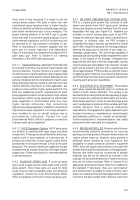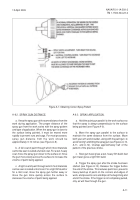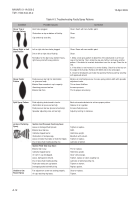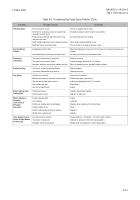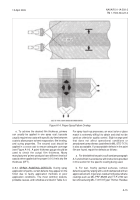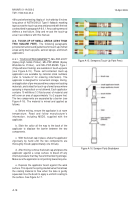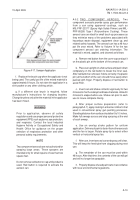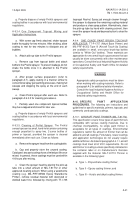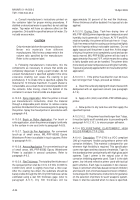TM-1-1500-344-23-2 - Page 185 of 240
A-15
NAVAIR 01-1A-509-2
TM 1-1500-344-23-2
15 April 2009
e. To achieve the desired film thickness, primers
can usually be applied in one spray coat; topcoats
usually require two coats with specific dry time between
coats to allow proper solvent evaporation, film leveling,
and curing properties. The second coat should be
applied in a cross coat to ensure adequate coverage
(see Figure A-14). A paint thickness gauge should be
used to check the actual film thickness. Many
manufacturers' primer products have different levels of
opacity when applied at the proper 0.6-0.9 mils dry film
thickness (DFT).
A-8.4. SPRAY PAINTING DEFECTS. During spray
application of paints, certain defects may appear on the
finish due to faulty application methods or poor
application conditions. The most common defects,
probable causes, and remedies are listed in Table A-4.
For spray touch-up processes, an exact color or gloss
match is extremely difficult to obtain and shall not be
used as criteria for quality control. Slight orange peel
that does not affect operational conditions or
aerodynamic smoothness (as defined in MIL-STD-7179)
is also acceptable. If unacceptable defects in the paint
film are found, repair the defects as follows:
a. For dried defective paint, scuff sand per paragraph
A-7 and refinish in accordance with instructions provided
in this section for the specific coating being used.
b. For wet, freshly painted surfaces, remove
defective paint by wiping with a cloth dampened with an
approved solvent. In general, residue from polyurethane
coatings such as MIL-PRF-85285 and TT-P-2760 can
be removed using MIL-T-81772 Type I Thinner. Residue
Back to Top

